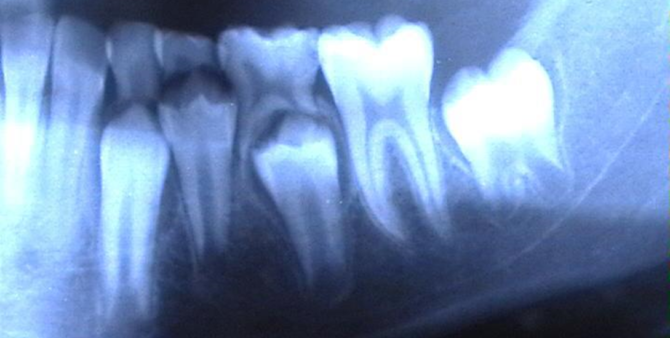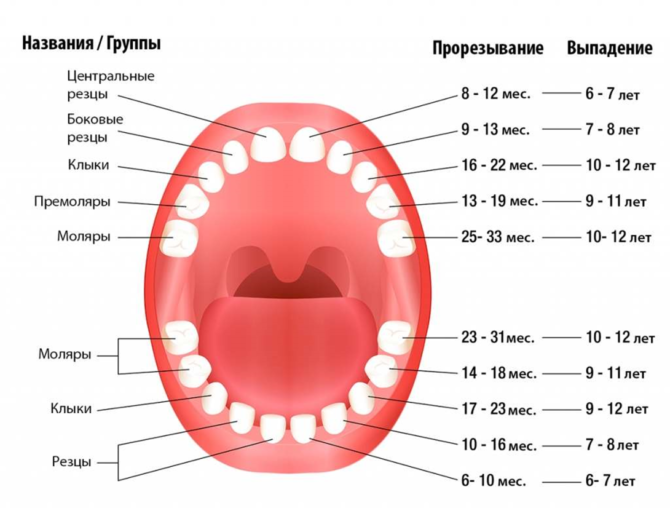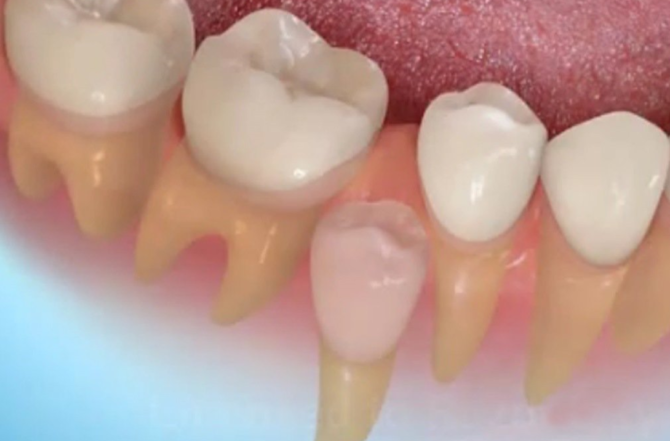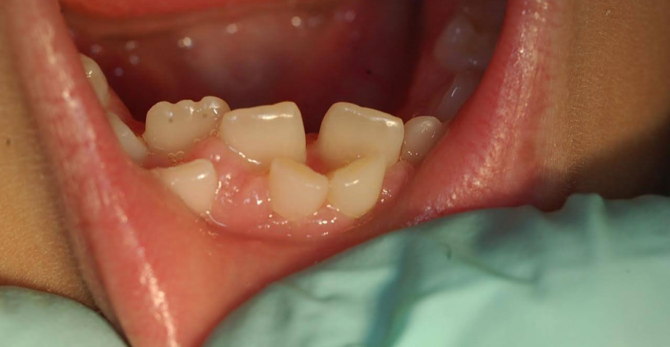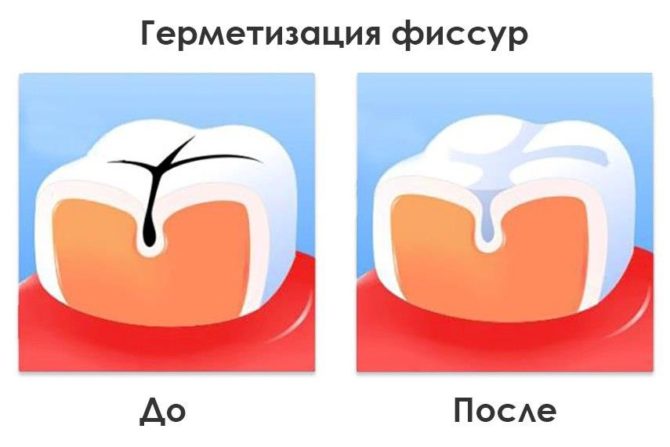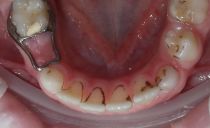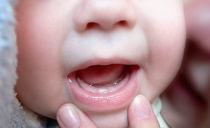Terms, scheme and procedure for replacing primary teeth in children with permanent
Despite the fact that the change of milk teeth in children is natural, and Schemes drawn up by dentists with the timing of their loss almost always correspond to realityThere are moments that parents should pay attention to. These are the features of oral care during the period of tooth row renewal, too early, prolonged or late process, requiring medical supervision, pain disturbing the child.
Content
How is the change of milk teeth to permanent
Formed milk bite is 20 temporary teeth, exactly this amount is observed in healthy three-year-old babies. By the age of 14, a natural replacement of primary teeth by permanent teeth occurs. By this age, the mouth counts from 28 (in the absence of upper and lower third molars) to 32 teeth.
In the period when a change should occur, the roots of temporary teeth begin to decay, dissolve, giving way to the developing primordium of the permanent. This is what this process looks like on an x-ray:
Gradually collapsing from the root to the neck, the milk tooth prepares to fall out. At this time, a permanent confidently takes his place.
The order and timing of the change of primary teeth for permanent
The traditional scheme for changing children's milk teeth for permanent looks like this:
At the age of 6 to 8 years, the first molars and central incisors appear, the lateral incisors are cut from 7 to 9 years. The change of fangs in children is observed from 9 to 12 years, the lower fangs usually appear earlier than the upper. At about the same age, the growth of the second molars begins, the third do not obey the general rule, they are the last in the list - their appearance can occur at the age of 17 to 26 years or not at all.
It is worth noting that the photo shows an approximate sequence of teething and loss of milk teeth. Small deviations cannot be regarded as an anomaly of development. The following factors can affect the order in which milk teeth change to permanent teeth:
- duration of breastfeeding;
- infections constantly circulating in the body;
- features of the course of pregnancy, chronic illness of the mother of the baby;
- genotype.
According to statistics, in girls, the change of primary teeth to permanent teeth begins earlier than in boys. This fact should be taken into account when evaluating the timeliness of the process.
Early deciduous teeth
Urgent removal due to therapeutic indications (destruction due to proliferation of carious foci, periodontal inflammatory processes) and injuries are the most common causes of early loss of milk teeth. It would seem that temporary teeth still leave their places, but dentists warn parents about the danger associated with premature release of the jaw from deciduous teeth.
We are talking about the possibility of taking the wrong position with molars. The fact is that after an untimely loss of a tooth, the dentition begins to gradually shift, filling the formed space with nearby teeth. Occupying part of the free space, they can be located above the rudiment of the constant. In this case, the permanent tooth experiences teething difficulties and is in the wrong position before appearing.
Avoid the consequences will help regular monitoring by a pediatric dentist.Orthodontic treatment, an x-ray, an appeal to maxillofacial surgery - all this is only part of the manipulations that the doctor can advise in such situations.
Late shift
The terms of the change of milk teeth for permanent ones can be shifted to a later period due to a genetic predisposition, poor diet and malnutrition, in which the baby lacks minerals and trace elements coming from outside. The delay directly depends on:
- the presence of active infections in the body;
- the degree of manifestation of chronic dyspepsia;
- predisposition to rickets.
Late tooth replacement is observed in children with phenylketonuria, as well as in babies living in areas with poorly cleaned or poor-quality drinking water.
The rudiments of molars may collapse or not develop at all; a stable milk bite is a sign of deviation. If, by the age of 8–9 years, a child’s teeth do not stagger and fall out, it’s just right to think about anomalies. Parents should immediately show their child to the dentist.
Special situations
The process of changing teeth in children of any age is physiological and should not cause discomfort. Pain and malaise are signs of inflammatory processes that a doctor should monitor. Therefore, with an increase in temperature, suppuration, excessive hyperemia of the gums, it is necessary to contact dentistry.
Special cases observed during bite changes include:
- Lack of permanent teeth after loss of milk.
- The appearance and active growth of permanent teeth before the loss of milk.
In the first case, the causes may be adentia - the absence of teeth and primordia in the jaw, and retention - the process in which eruption is delayed. Find out why the bite is thinning, but not replenished, only a doctor can. In the second case, we are talking about "shark teeth." Many dentists do not consider the growth of molars before the loss of milk is a sign of abnormal development. Practice shows that over time, the milk bite disappears, and the elements of the constant gradually occupy the desired position.
Change of milk teeth in children strictly according to the table with the timing is a rarity. Doctors make small deviations both in order and in terms. The main thing is to provide the child with constant monitoring by a professional and thorough care before the shift begins.
The table of the change of milk teeth in children
| Teeth name | Teething time | Teeth name | Teething time |
|---|---|---|---|
| Central incisors | From 6 to 7 years old | Second premolars | From 10 to 12 years old |
| Side incisors | From 7 to 9 years old | First molars | From 6 to 7 years old |
| Fangs | From 9 to 12 years old | Second molars | From 11 to 13 years old |
| First premolars | From 10 to 12 years old | Third molars | From 17 to 21 years |
Dental care during the shift
Waiting for molars and controlling the change of baby teeth in a child, one must not forget about hygiene. During this period, fragile enamel needs proper cleansing and nourishment. The arsenal of necessary funds is fluorinated pastes, created taking into account age-related changes, flosses, vitamin complexes. Doctors recommend that parents take their children to procedures for sealing fissures and to rehabilitate the oral cavity.
Well Care Rules
Bleeding wounds often form at the site of the tooth that has fallen out, especially if the child has independently shaken it and tore it out. You can stop a small bleeding using a sterile fleece crumpled into a tight roller. It is necessary to squeeze it between the jaws in the wound area and hold it in your mouth for 4–5 minutes, during this time you can change the roller a couple of times to clean.
After the loss of "milkman" it is advisable to refrain from eating for 2 hours. In the next two days, the exclusion of acidic and salty foods is recommended. Hot and too cold drinks during the period when milk teeth fall out are also undesirable.
Attention! It is forbidden to use potent antiseptics, concentrated hydrogen peroxide and alcohol to treat wounds.
Nutritionist Recommendations
As can be seen from the table above, the teeth change over several years, and this entire period is extremely important for the formation of a permanent bite. To ensure proper nutrition, the child's menu should include:
- calcium-rich foods: hard cheeses, medium-fat cottage cheese, milk;
- uncooked fruits and vegetables;
- fish dishes of low-fat varieties: hake, pollock, cod.
In case of intolerance to dairy products, additional calcium intake is recommended in those periods when there is a change in bite. The dentist will help you choose the right drugs for your child.
Do not indulge children with caramel, candies and other sweets. This prohibition is due to the softness that distinguishes milk teeth, as well as the immaturity of permanent enamel.
Since the roots of milk teeth are destroyed during the shift, there is a risk of premature loss due to the use of viscous and hard foods: toffee, nuts. Their amount in the daily diet should also be limited.
Another caveat concerns dyeing products. Many food colors can permanently change the color of enamel during its maturation, so parents should carefully monitor the choice of sparkling water, syrups, lollipops.


